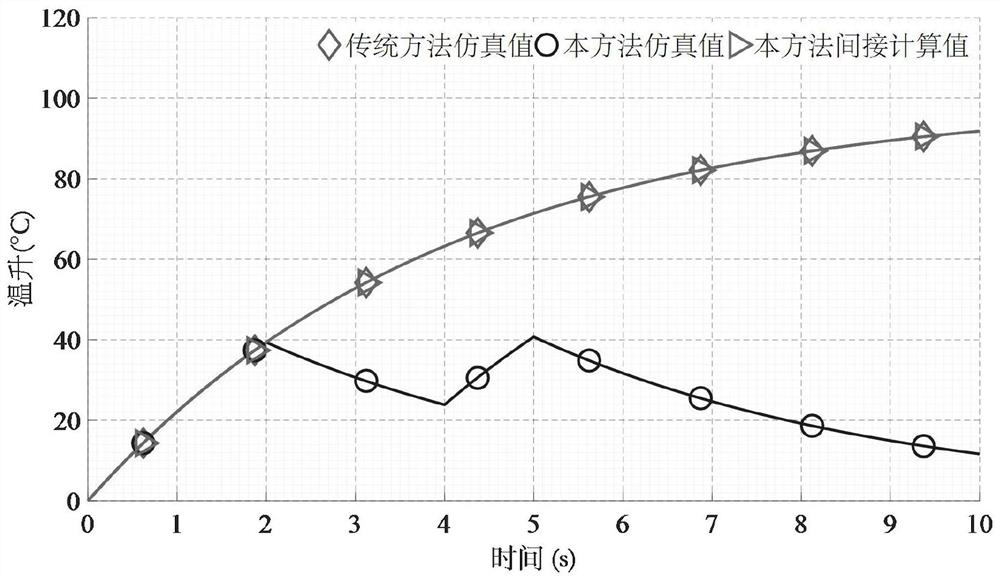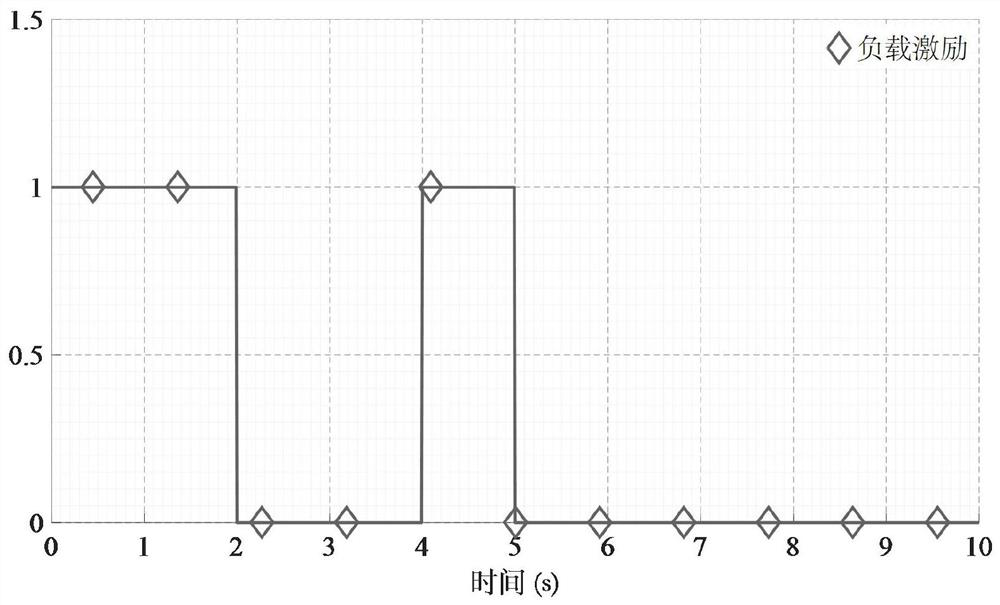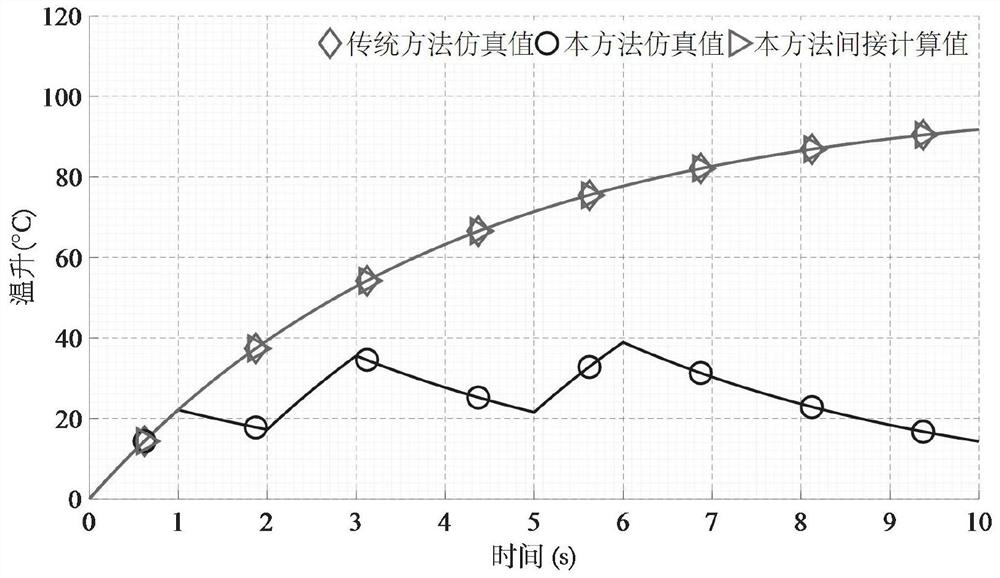An equivalent test method for motor temperature rise with multiple load excitations
A technology of equivalent testing and temperature rise, applied in the direction of motor generator testing, etc., can solve the problems of difficult temperature rise test method and high energy consumption, avoid the risk of motor damage, simplify the calculation process, and reduce the risk of high temperature damage Effect
- Summary
- Abstract
- Description
- Claims
- Application Information
AI Technical Summary
Problems solved by technology
Method used
Image
Examples
specific Embodiment approach 1
[0025] Specific implementation mode 1: This implementation mode records an equivalent test method for motor temperature rise with multiple load excitations, and the steps of the method are as follows:
[0026] Step 1: Multiple load short-time excitation of the motor: make the motor perform multiple short-time load excitations under the expected test conditions, and the motor cools freely between multiple short-time load excitations; during this process, the temperature of the motor There are rising and falling fluctuations when the load is excited, but it is not necessary to achieve a stable temperature rise, and finally remove the load to cool the motor; the range of temperature rise during the test is more than 1% of the rated temperature rise; during the working process of the motor, Ambient temperature T E The data that changes with time is denoted as T E (t), the temperature T of motor components (such as windings, casings, cores, end covers, bearings) M The data that c...
Embodiment 1
[0033]Indirect test experiment of motor temperature rise under two load excitations. load excitation signal such as figure 2 As shown, "1" in the figure means loading, and "0" means unloading. by figure 2 Excite the motor with the load shown, record the temperature value T of the motor part (winding) measured by the temperature sensor throughout the process M (t). During the test, the ambient temperature is considered to be basically constant, approximately a constant value, T E (t)=T M (t 0 ). Calculate the temperature rise data T of the motor during this process R (t)=T M (t)-T E (t)=T M (t)-T M (t 0 ), the data such as figure 1 The circle marks the curve shown in the middle. By formula (1)
[0034]
[0035] Calculate the data T' of the continuous excitation state of the load R (t), such as figure 1 The middle triangle marks the curve. In addition, the temperature rise curve of the motor under the condition of rated load is obtained by the conventional...
Embodiment 2
[0037] Indirect test experiment of motor temperature rise under three load excitations. load excitation signal such as Figure 4 As shown, "1" in the figure means loading, and "0" means unloading. by Figure 4 Excite the motor with the load shown, record the temperature value T of the motor parts during the whole process M (t). During the test, the ambient temperature is considered to be basically constant, approximately a constant value, T E (t)=T M (t 0 ). Calculate the temperature rise data T of the motor during this process R (t)=T M (t)-T E (t)=T M (t)-T M (t 0 ), the data such as image 3 The circle marks the curve shown in the middle. The data T′ of the load continuous excitation state is calculated by the formula (1) R (t), such as image 3 The middle triangle marks the curve. In addition, the temperature rise curve of the motor under the condition of rated load is obtained by the conventional method as follows: image 3 The middle diamond marks the c...
PUM
 Login to View More
Login to View More Abstract
Description
Claims
Application Information
 Login to View More
Login to View More - R&D
- Intellectual Property
- Life Sciences
- Materials
- Tech Scout
- Unparalleled Data Quality
- Higher Quality Content
- 60% Fewer Hallucinations
Browse by: Latest US Patents, China's latest patents, Technical Efficacy Thesaurus, Application Domain, Technology Topic, Popular Technical Reports.
© 2025 PatSnap. All rights reserved.Legal|Privacy policy|Modern Slavery Act Transparency Statement|Sitemap|About US| Contact US: help@patsnap.com



